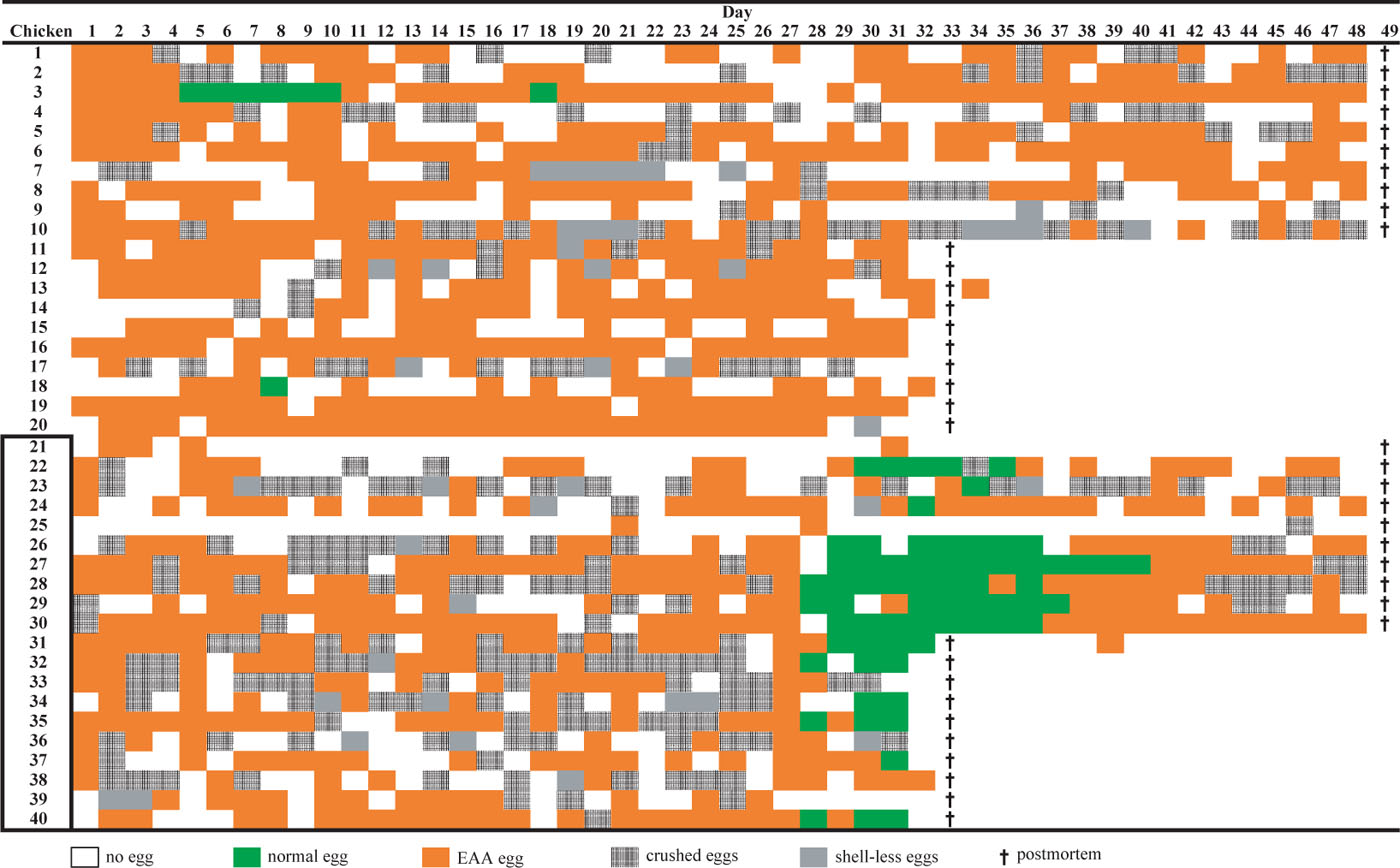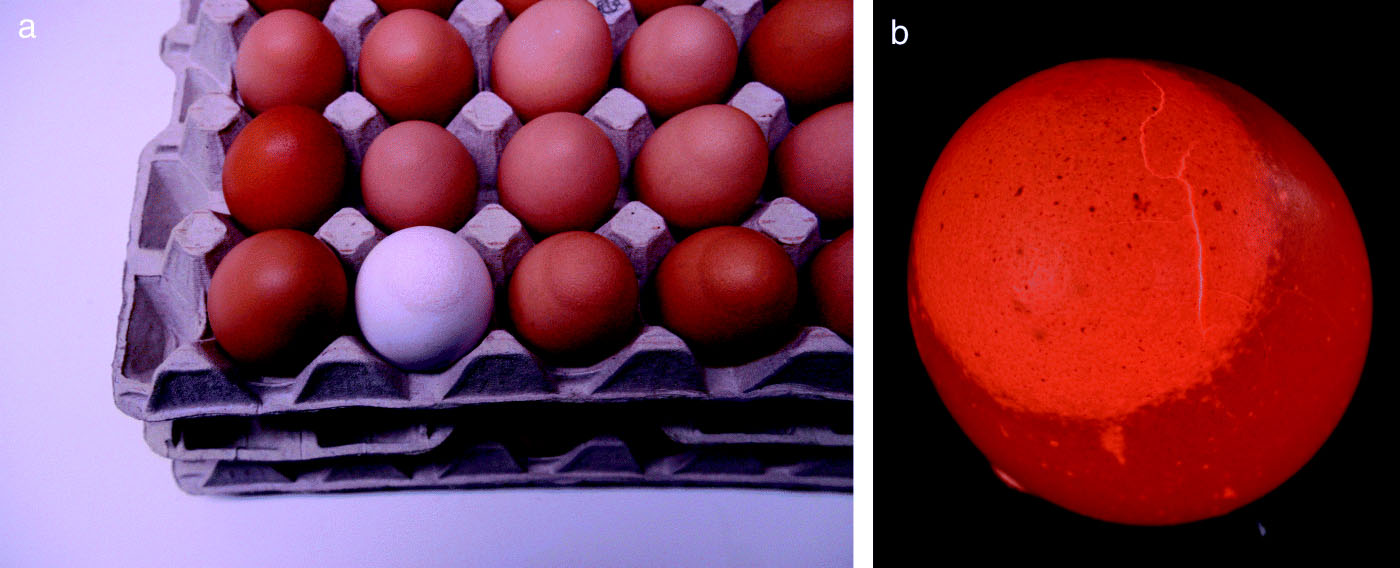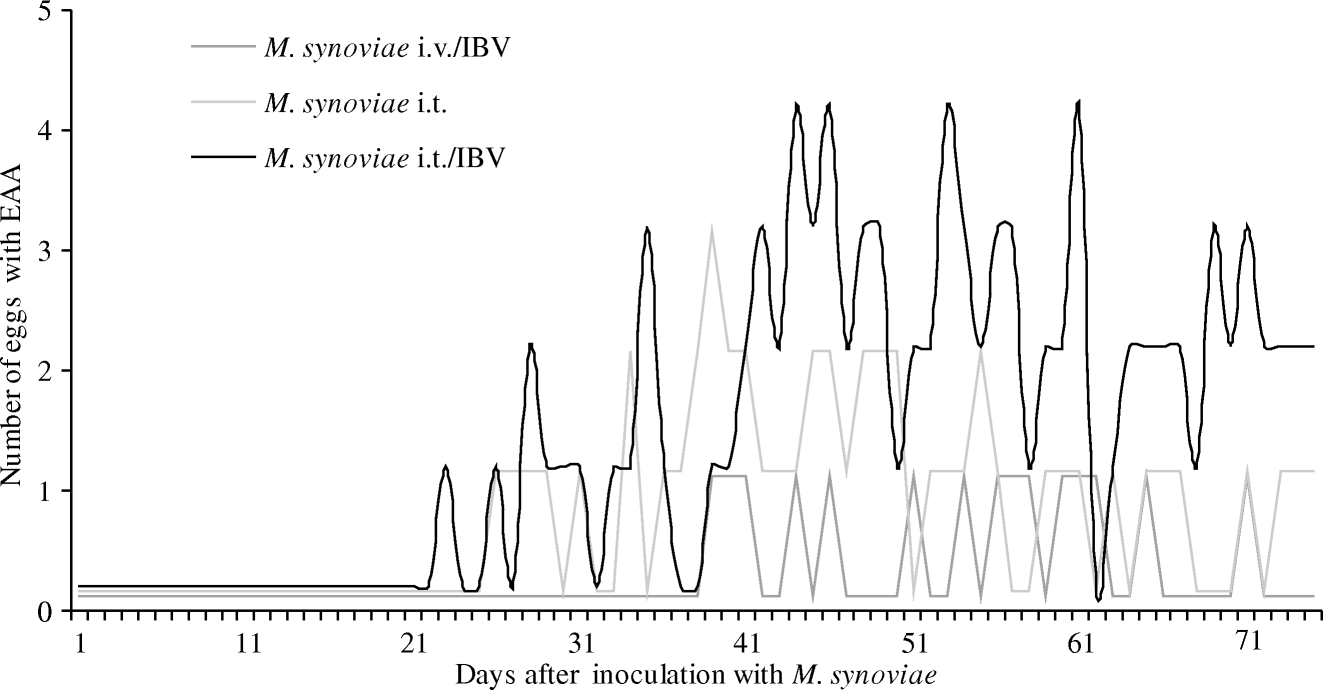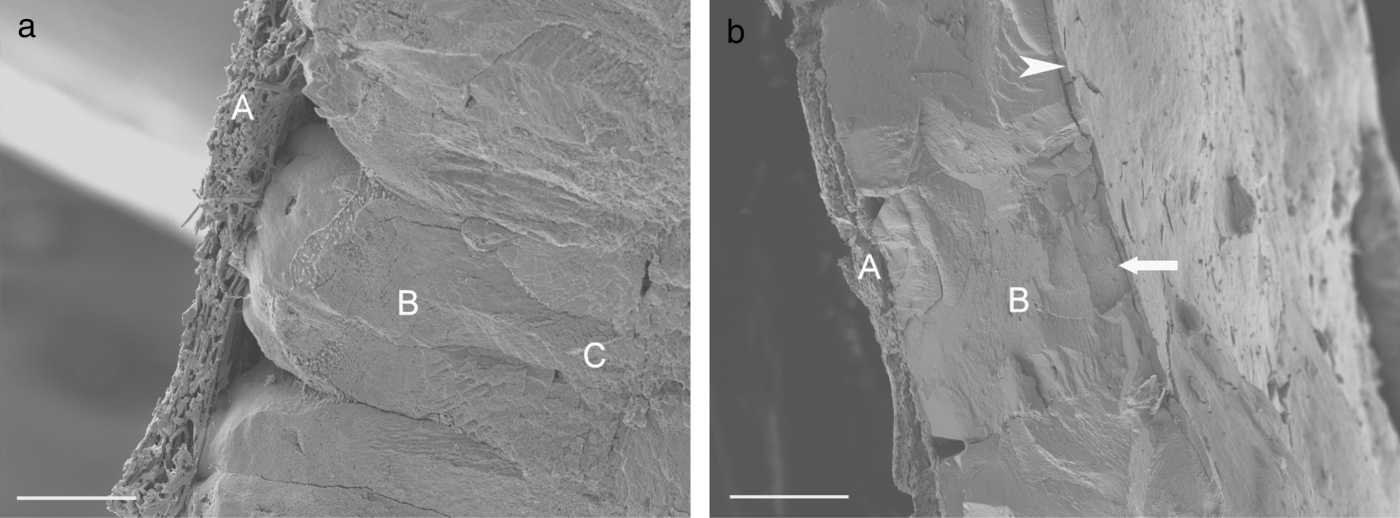Figures & data
Table 1. Serology and mycoplasma culture of oviducts of hens from farms producing eggs with EAA and farms producing unaffected eggs
Table 2. Egg quality measurements, mycoplasma serology and mycoplasma culture of oviducts in Field study 2 (treatment trial)
Figure 1. Total egg production and production of eggs with EAA in Field study 2. Boxed numbers (21 to 40) indicate the chickens treated with long-acting oxytetracycline at day 25. Note the temporary production of normal eggs for 12 days (day 28 until day 40) after administration of antibiotic.

Figure 2. 2a: Eggshell apex abnormality characterized by an altered shell surface, shell thinning, increased translucency, and the occurrence of cracks and breaks. Eggshell pathology is confined to a region approximately 2 cm from the apex. The picture shows eggs originating from brown and white layer chickens. 2b: The clear demarcation zone separating the affected eggshell from the remainder of the shell is more apparent at candling. The abnormal eggshell has increased translucency.

Table 3. Serology, mycoplasma culture of the oviduct, growth, eggshell strength, egg production and production of eggs with EAA in the experimental infection study
Figure 3. Production of eggs with EAA after experimental infection. Eggs with EAA were not produced in the control group and the group inoculated only with M. synoviae intravenously.

Figure 4. Dendrogram constructed from the unweighted paired group method with arithmetic averages analysis of HindIII/HhaI AFLP patterns. The strains and isolates included are: from Field study 1, SP2005-00257 A (Farm 1) and SP2005-00255 B (Farm 3, also inoculum used for experimental infection); from Field study 2, SP2007-00333-3 (untreated bird), 00333-4 (untreated bird), 00333-14 (treated bird), 00333-15 (treated bird) and SP20007-00426-1 (bird producing unaffected eggs); from the experimental infection study, SP2007-00597-15 and SP2007 00601-24; and two additional field isolates, SP2002-00804 and SP2007-01054. Three different clusters of M. synoviae strains could be identified. M. synoviae isolates from oviducts of hens producing eggs with EAA were not clonal. The inoculum strain had 88% similarity with the oviduct reisolates from the animal experiment. Isolate SP2007-00426-1 from Field study 2 had 85% similarity with the other oviduct isolates from this study.

Figure 5. 5a: SEM image of an unaffected eggshell showing the inner membranes (A), the mammillary knob layer (B) and part of the palisade layer (C). Bar = 50 µm. 5b: SEM image of an abnormal apical eggshell. The mammillary knob layer is absent and only part of the palisade layer is present: inner membranes (A), palisade layer (B), vertical layer (arrow) and cuticule (arrowhead). Note also the increased density of the inner membranes. Bar = 100 µm.
